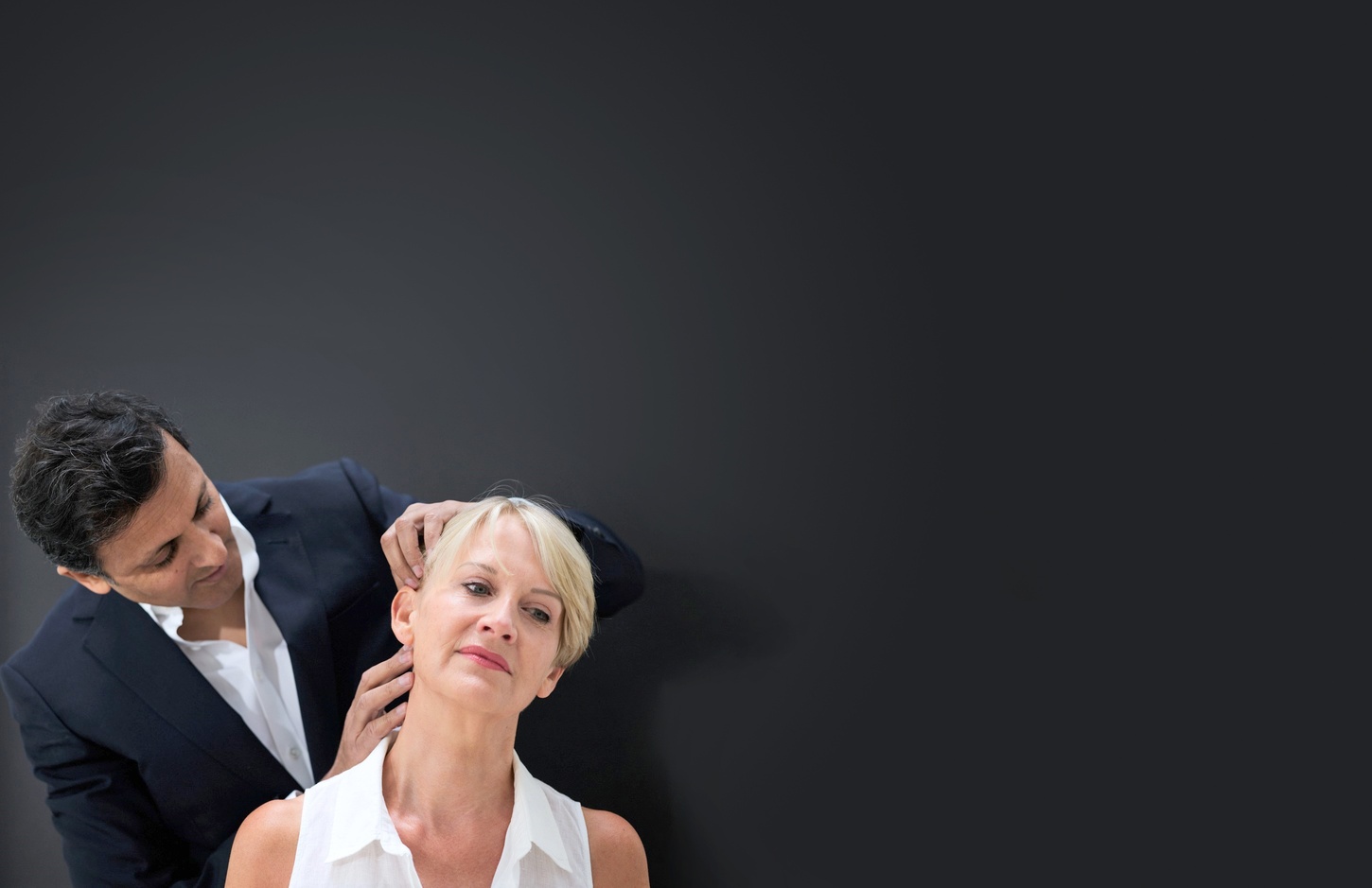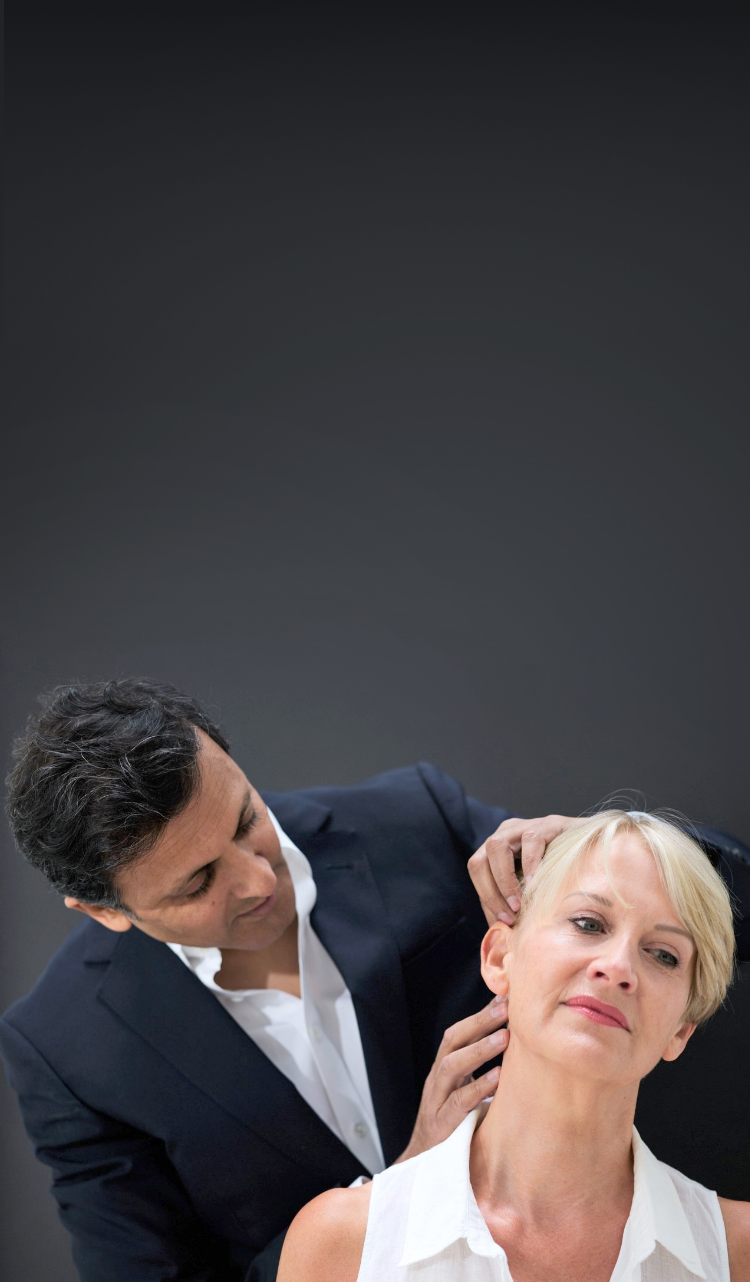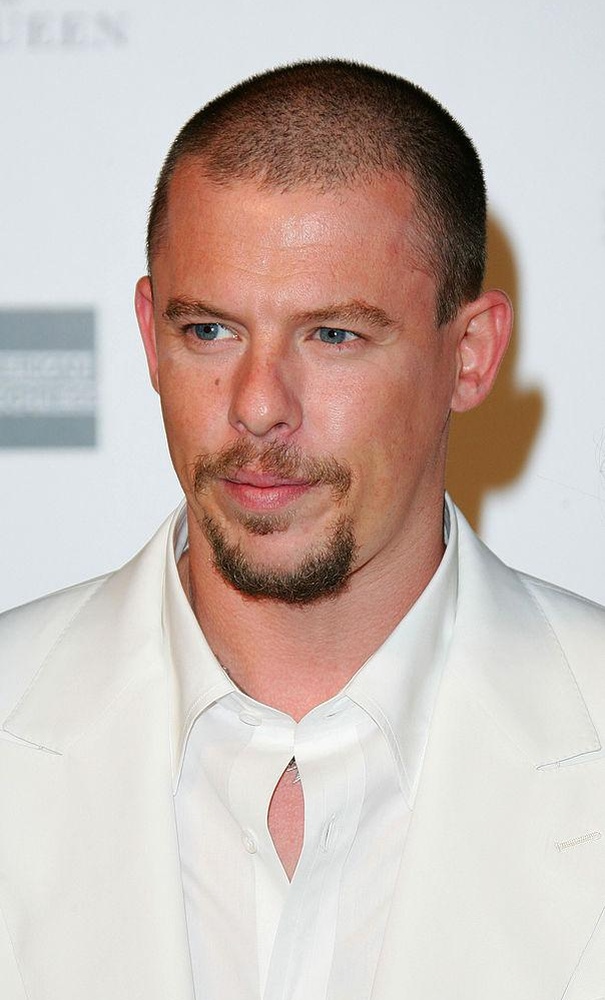Everyone’s face ages in a unique way through soft tissue volume loss, gravity, or bone loss. It is important that Mr Grover does some detective work to determine which route was unique to you. Only if there has been significant gravitational descent and laxity of soft tissues will facelifting be helpful. Mr Grover will always give you a friendly and honest opinion as to whether surgery will be worthwhile and what result you can realistically expect, just as he would if it was a member of his own family.
When it comes to the detail of facelift surgery,
Everything Matters
INTRODUCTION
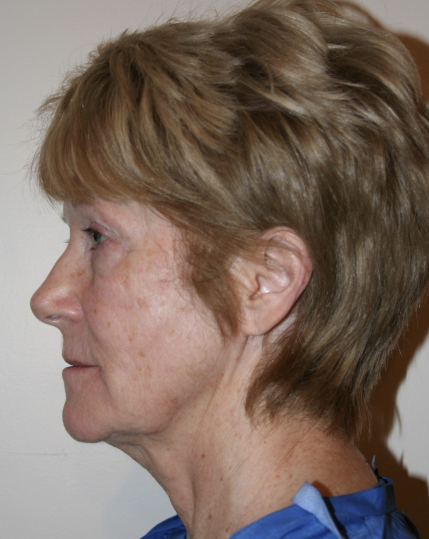
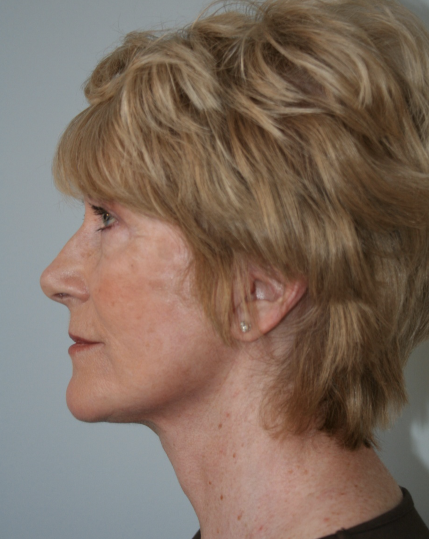
Before and after photos of facelift patient operated on by Rajiv Grover
Rajiv uses the Deep Plane Facelift technique and is particularly known for his artistic approach to achieving a natural look which he has lectured on at The Louvre in Paris. He combines this with the use of your younger photographs to provide a roadmap to guide surgery and keep you still looking like you – a technique called Facelift Couture.
Contents:
What happens with age?
Forehead and Eyes.
Gravity causes the forehead and brows to droop creating a tired appearance around the eyes. Additionally, the eyelid skin stretches causing looseness which later develops into bags as the underlying fat of the eye socket protrudes forward.
Midface and Lower face.
From your early 40’s volume is subtly lost from the soft tissue of the cheek. This is later compounded by the effect of gravity which causes the midface to slide towards the nose. This deepens the nasolabial (nose to mouth) folds and simultaneously converts your face from heart shaped to a squarer, older looking appearance.
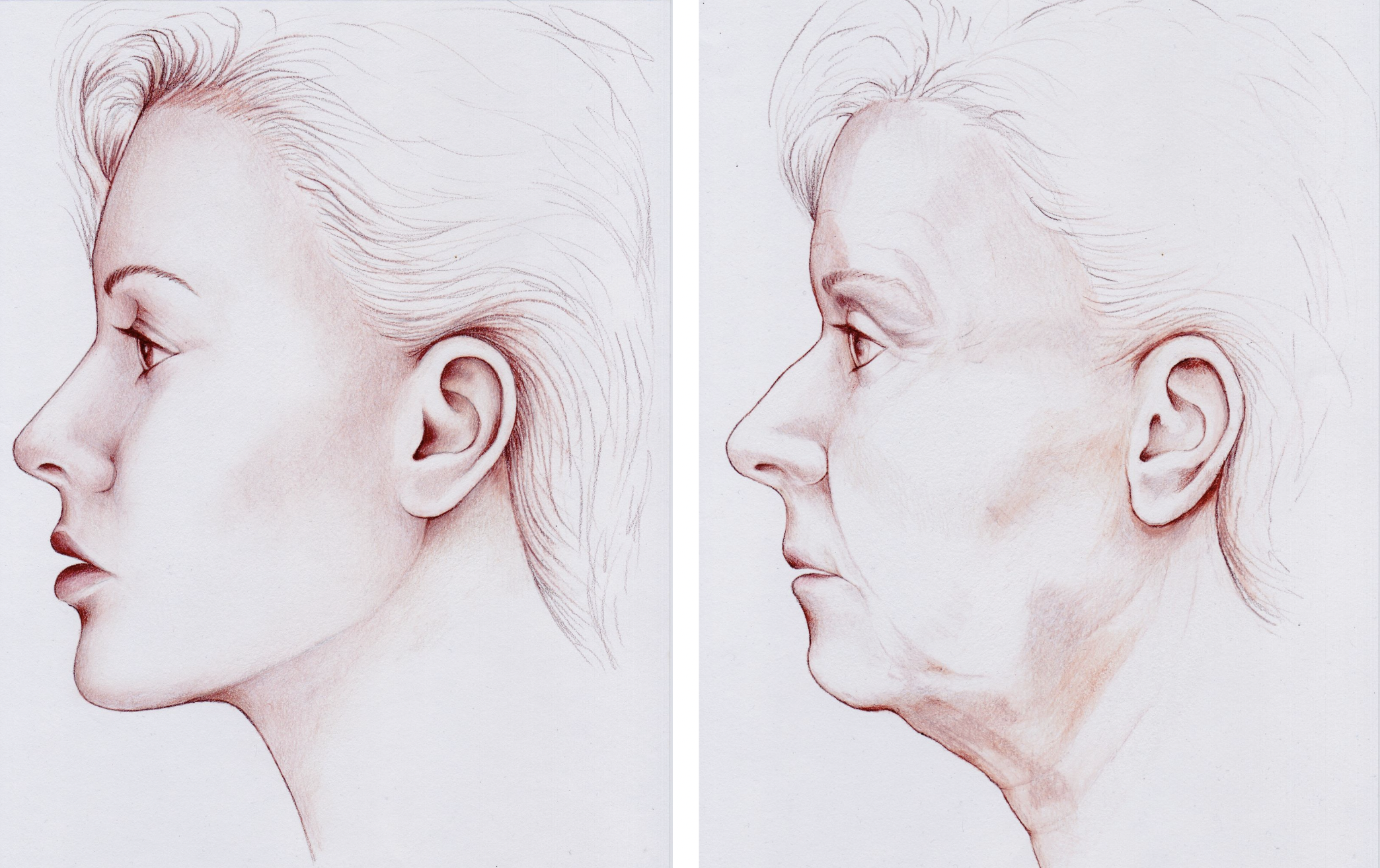
Jawline and neck.
We think of gravity as the main cause of ageing in the lower face but bone loss in the mandible (lower jaw) plays an equal role in creating jowls. In the neck loose skin forms into folds and there is fat deposition under the chin. Deeper changes in the neck are again primarily due to bone loss. The reduction in size of the mandible (lower jaw) displaces the deeper structures in the floor of the mouth downwards creating a shorter and more sloping profile in the neck.
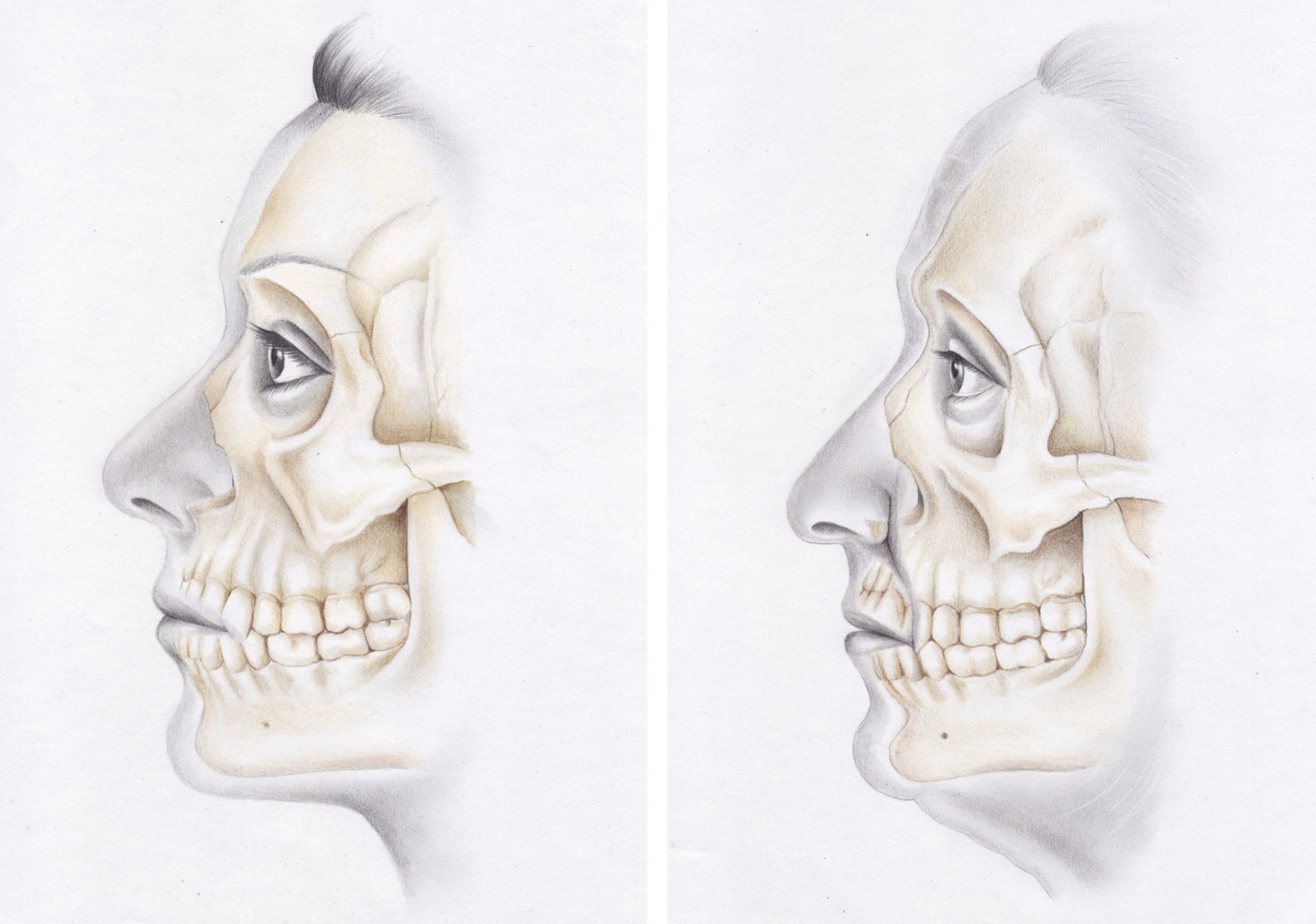
Pre-consultation assessment
Mr Grover appreciates that the wait for an appointment can be lengthy, and he is keen that this wait is worthwhile for you. To help with this he performs a pre-consultation assessment by email, requesting answers to a medical questionnaire and some standardised photographs of your face. His first priority is to check that surgery is a medically wise decision and secondly, to assess if your face shows evidence of gravitational descent. Only individuals with true soft tissue descent as well as laxity will benefit from facelift surgery. Rajiv evaluates all the submissions personally and this is a complimentary service in order to help select those who he feels can genuinely benefit from surgery. Soft tissue descent can usually be assessed from photographs, but laxity may need to be confirmed in person. Once you have been offered an appointment and are in the system, Mr Grover puts one hour aside for each new facelift consultation.
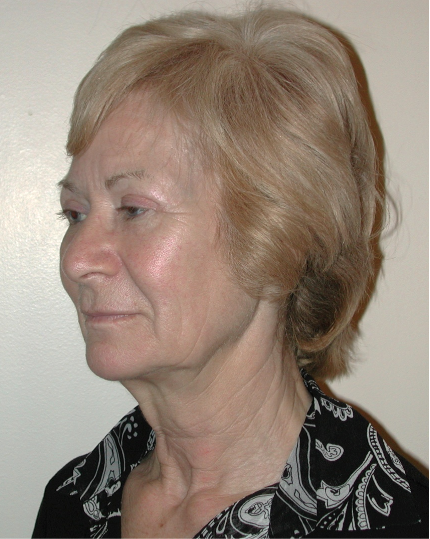
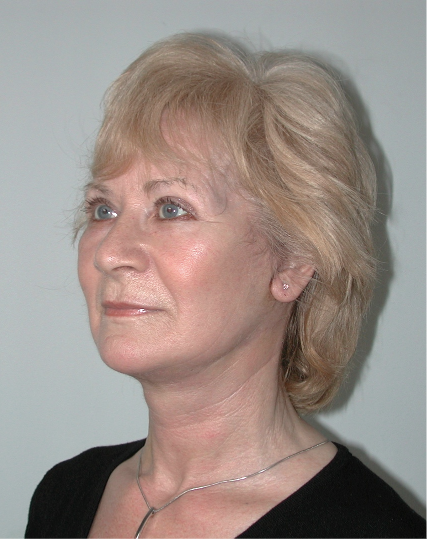
Before and after photos of facelift patient operated on by Rajiv Grover
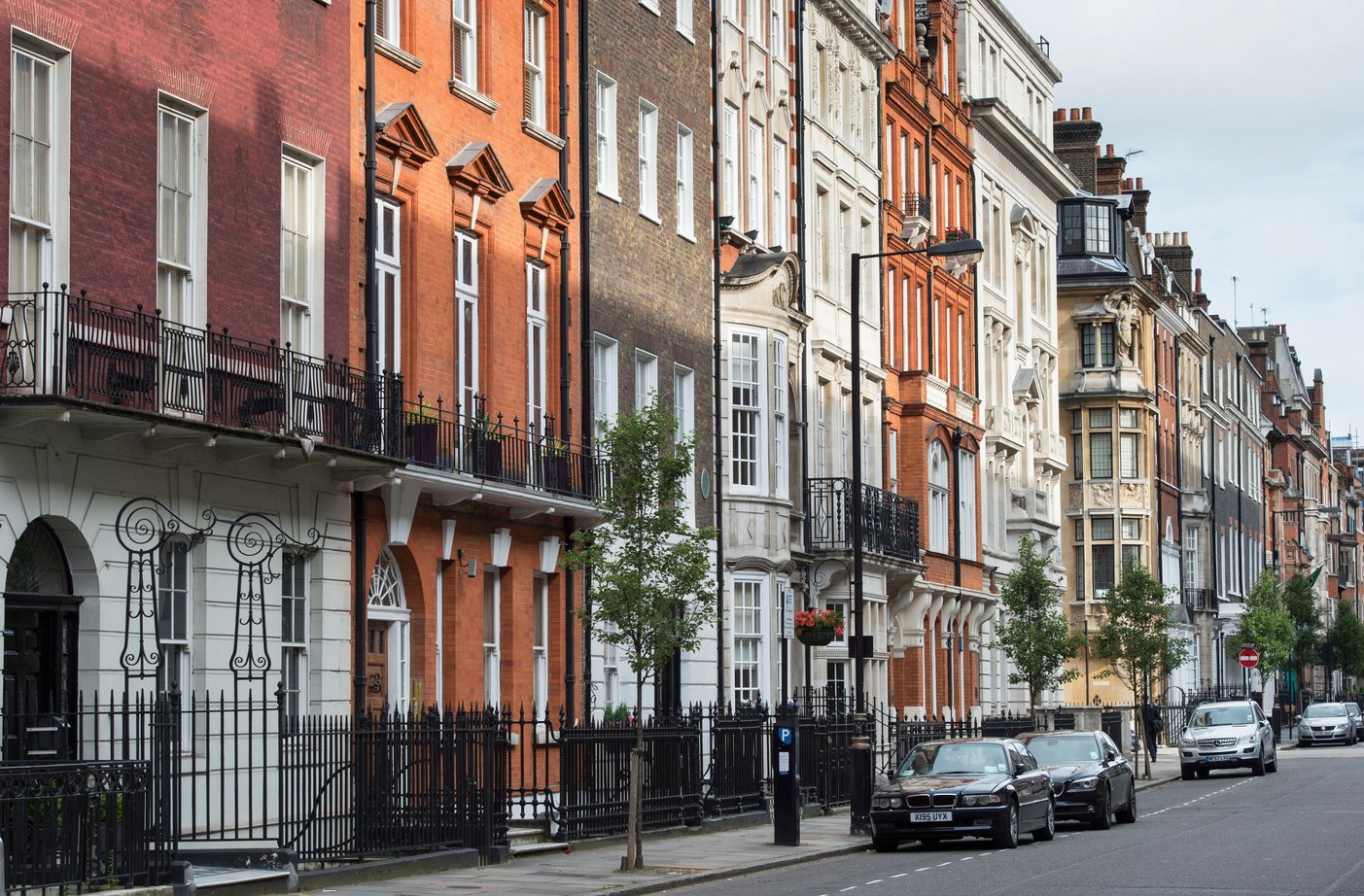
Rajiv Grover’s consulting rooms located at 94 Harley Street
What happens at the consultation?
Mr Grover will carefully listen to your concerns, explore what you hope to achieve and understand your reasons behind seeking surgery. After thoroughly checking your medical history, examining your face for evidence of gravitational descent, laxity, and studying photographs of you when you were younger, he will do some detective work to confirm whether your face has aged predominantly by volume loss, gravity, or bone loss. This allows him to assess if facelifting will be helpful and to provide you with a realistic vision of the outcome, recovery, and potential risks. At that stage he will step back and give you time to think carefully before making your decision.
Purpose of Surgery
Rajiv only performs facial surgery specifically for the Protection, Maintenance, and Restoration of health. After a full medical consultation, a diagnosis and treatment program are agreed. All subsequent surgery and after-care is personally performed by Rajiv. The outcome of the treatment program is assessed at your follow-up appointments over six months.
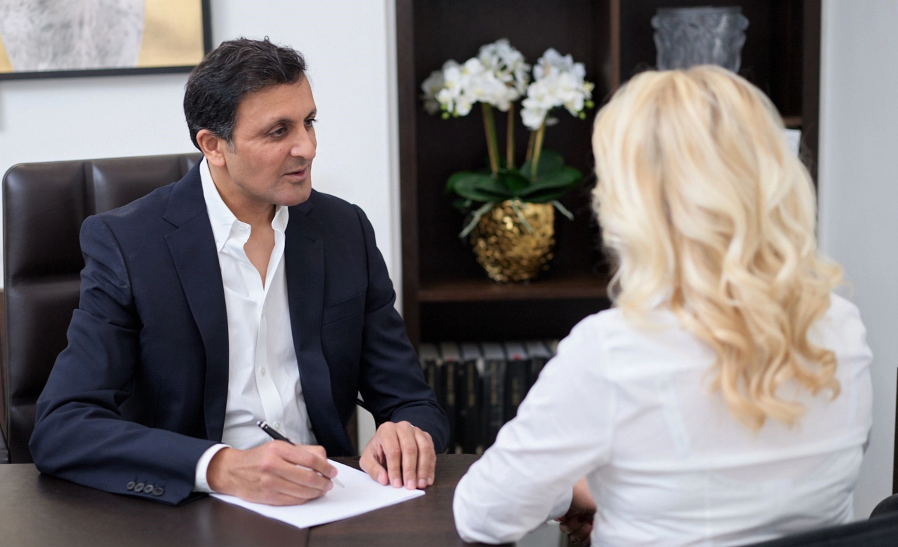
What can be done – The Deep Plane Facelift
Rajiv believes that Facelifting is more than just a lift – it is artistry. Leonardo da Vinci demonstrated that the biggest change between youth and maturity was alteration in face shape rather than the development of lines or wrinkles. The soft tissue volume within the face which is responsible for determining shape is carried by a layer called the SMAS. It is this layer which moves with time and gravity taking volume with it and changing facial appearance from heart shaped in youth to a square shape with age. An artistic approach to facelifting aims to restore the heart shape of youth by moving the SMAS (and therefore facial volume) back to its original position.
Achieving a natural look requires the SMAS to be moved without tension which can only be achieved by releasing its attachment from the underlying ligaments that hold it in place. This is the crucial step that differentiates Deep Plane facelifts from others. Mr Grover only performs facelifting using the Deep Plane technique as this method inherently provides a more effective and natural looking lift. A second advantage of the Deep Plane technique is that the skin is no longer peeled from the SMAS as a separate layer (as in other facelifts) but remains attached and is carried as a passenger with the SMAS. This better maintains the blood supply of the skin which helps with healing and minimises scarring. The third advantage of Deep Plane surgery is that the direction of lift is more vertical which better reverses the pull of gravity. This can only be achieved by releasing the SMAS from its underlying attachments and gives an artistic freedom unique to Deep Plane Facelifting. The exact angle of lift can be tailored to how your face has aged and guided by “the roadmap” of your younger photographs. This is the basis of “Facelift Couture” which helps preserve a natural look and keeps you still looking like you.
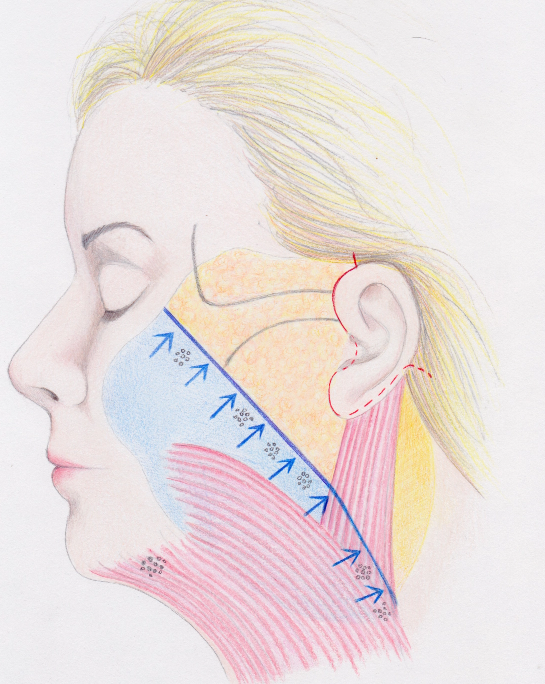
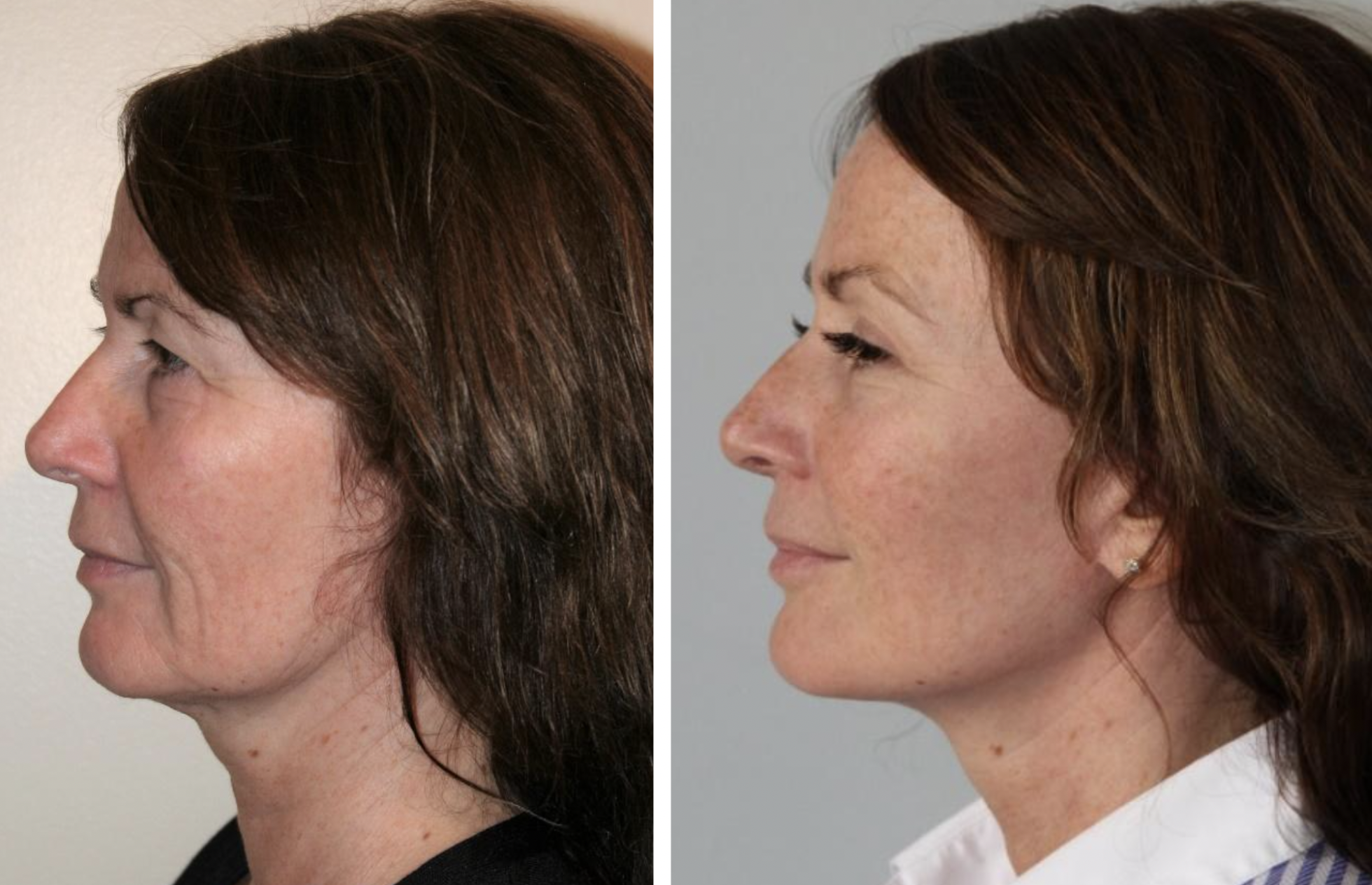
Before and after photos of facelift patient operated on by Rajiv Grover
In summary the Deep Plane facelift technique better allows the restoration of face shape by permitting the SMAS to move tension free, carrying facial volume and the overlying skin with it. This artistic freedom also means the direction of lift can be customised to each patient and guided by your younger photographs. By avoiding the need to peel the skin from the SMAS as a separate layer, the results are softer and more natural.
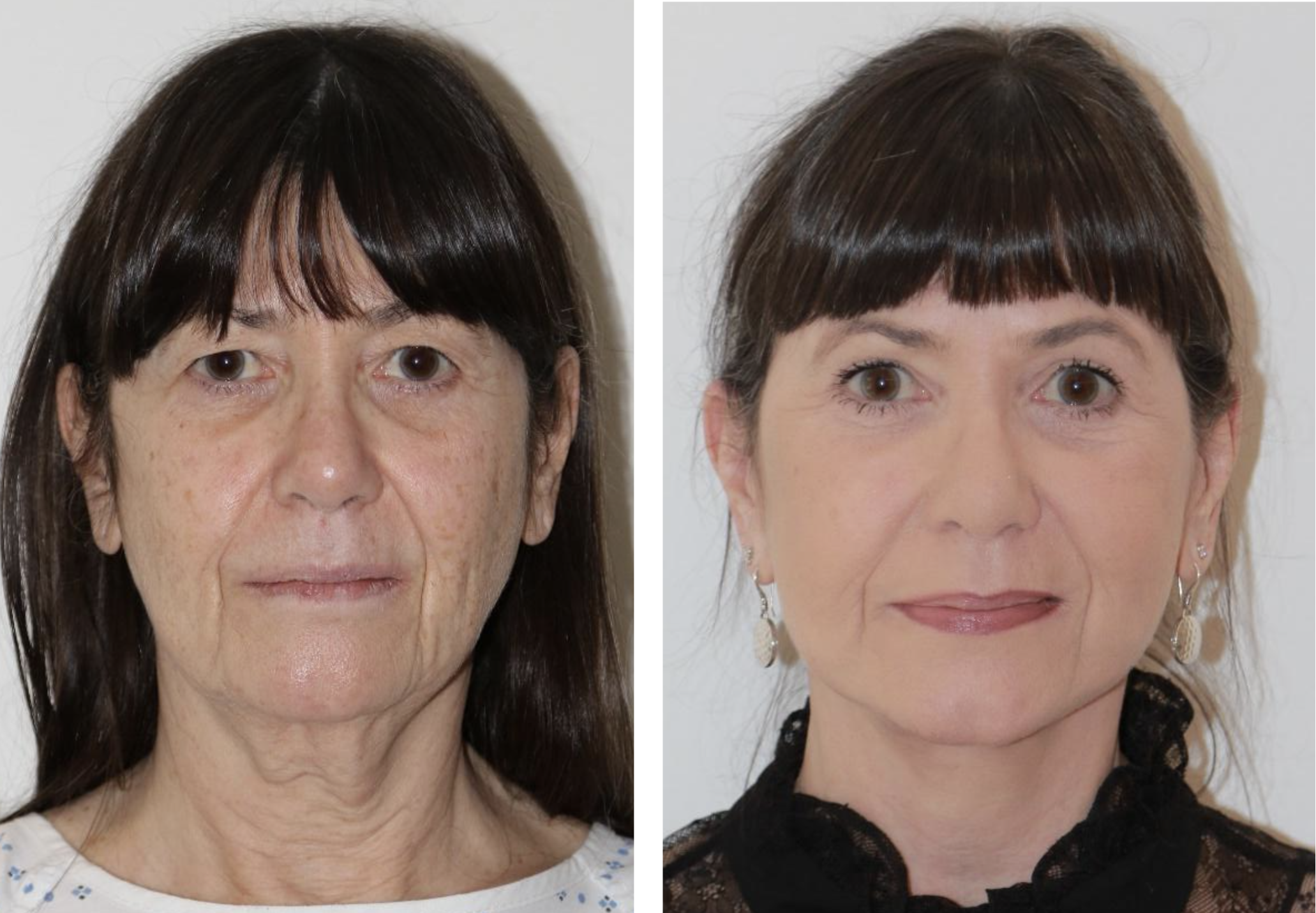
Before and after photos of facelift patient operated on by Rajiv Grover
Deep Plane Neck Lift and Platysmaplasty
Face lifting using the Deep Plane technique will automatically lift the neck and produce improvements to the jowl and jawline because the facial SMAS and neck muscle (Platysma) are one continuous layer. The key element of the Deep Plane technique is the release of the SMAS from its underlying attachments. This means repositioning the SMAS will automatically reposition the Platysma because the two will then move as one. This makes Deep Plane Face and Neck lifting inevitably a combined process.
The aim of a neck lift is to sculpt a younger looking profile, reposition underlying muscles so they support the neck and remove excess skin. This can often be accomplished through the incisions made for a facelift around the ears (involving lateral platysmaplasty – meaning approached from the side). However sometimes a small incision under the chin may be required to tighten the neck muscles centrally (known as anterior platysmaplasty – anterior because the neck muscles are approached from the front). As a consequence of bone loss in the lower jaw (mandible) the space for deeper structures in the floor of the mouth such as deep fat, supporting muscles, and salivary glands becomes limited displacing them downwards which creates a shorter and more sloping profile in the neck. Unfortunately, there is no way of making the jaw bigger to accommodate the displaced tissues so part of a Deep Plane Necklift may include reduction of some of these deeper structures. This helps to sculpt the profile and make the space for the platysma muscle to be lifted into which restores a more elegant profile.

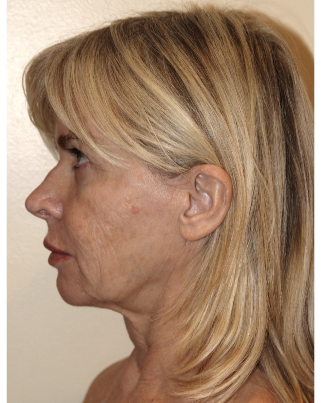
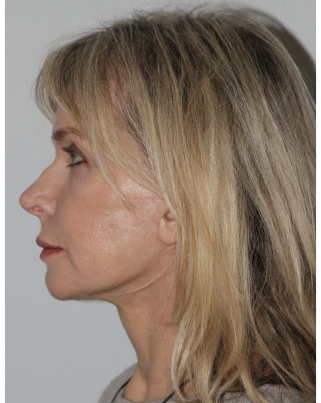
Before and after photos of facelift patient operated on by Rajiv Grover
How long does a facelift last?
Facelifting puts the ageing clock back by 8-10 years on average, but of course, cannot stop it from ticking. Ten years after your facelift you will certainly have aged but will still look younger than if you did not have the surgery. Please remember that ageing is not a linear process but can occur in spurts which follow periods of stress, illness, or weight loss. Consequently, no surgeon can honestly predict exactly how long the improvement will last which is why the figure of 8-10 years is quoted as an honest average. There are some patients for whom the rejuvenation can be 15 years but equally some for whom it is less than the average because they may have suffered an ageing spurt. Mr Grover exclusively performs the Deep Plane Facelift technique which has been shown to have a greater longevity than other SMAS facelifting techniques.
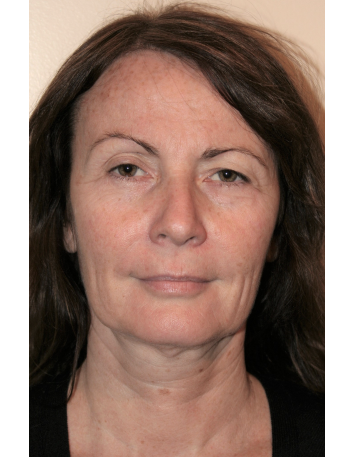
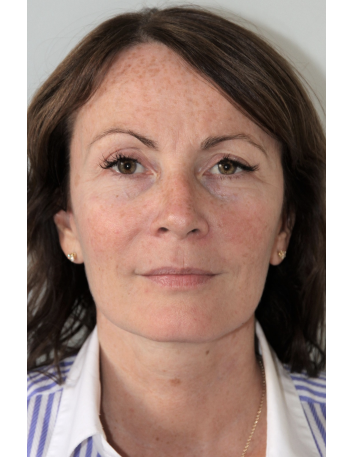
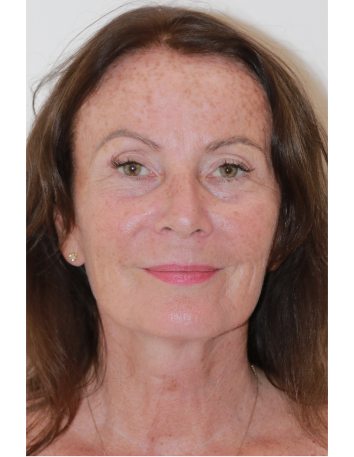
Before and after photos of facelift patient operated on by Rajiv Grover with 14 year Follow-up
Pre-op (Left side), One year post facelift (middle), 14 years post facelift (Right side)

Patient of Rajiv’s who had a facelift 15 years previously. Now aged 78 she has just started her modelling career and still looking good 15 years after her surgery.
How will Mr Grover maintain a natural look?
Mr Grover’s aim with Facelifting is to make a significant and worthwhile improvement but to keep the face still looking like you and as if it was never touched. Achieving this requires three important considerations. Firstly, the application of modern surgical techniques which inherently lift the face in a more natural and effective way, specifically the Deep Plane Facelift technique.
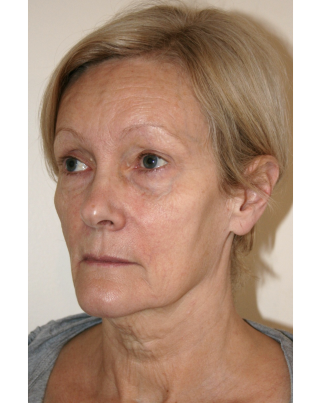

Before and after photos of facelift patient operated on by Rajiv Grover
Secondly the application of an artistic approach to create natural looking beauty. After studying the original works of Leonardo da Vinci, Rajiv discovered that the artist portrayed natural beauty through youth, femininity, and elegance, characterised by contour in the midface, definition in the lower face, and a smooth silhouette in the jawline and neck. Leonardo called this: ‘the formula for the feminine eternal’. Rajiv has adapted Leonardo’s formula to the technique of Deep Plane facelifting to help restore natural beauty in the same three ways.
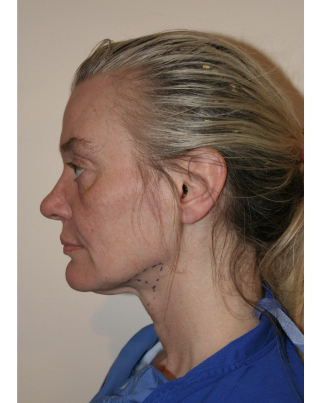
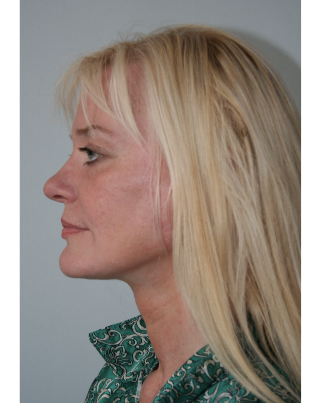
Before and after photos of facelift patient operated on by Rajiv Grover
Thirdly, customising each facelift so it still looks like you. Rajiv addresses this by using younger photographs of his patients as a roadmap to guide surgery, a concept known as “Facelift Couture”.
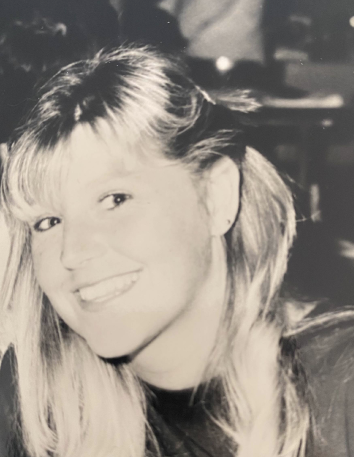
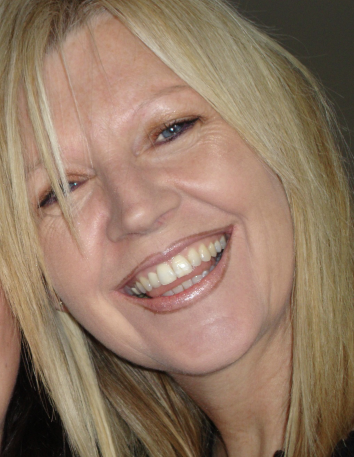

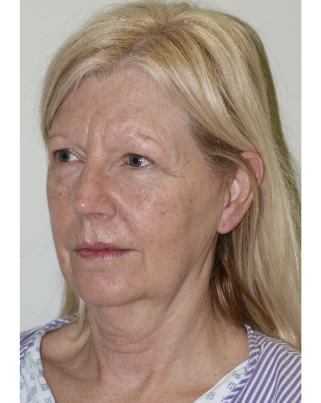
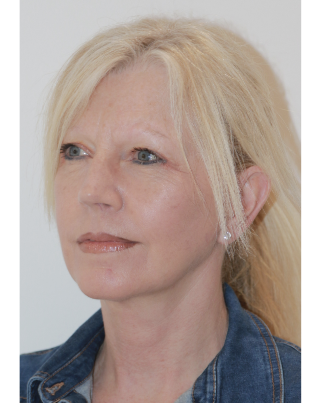
Before and after photos of facelift patient operated on by Rajiv Grover using her previous photographs as a roadmap to guide surgery - Facelift Couture
Rajiv has an artistic approach to facelifting that is innovative and modern, yet timeless and classic
– Lee Alexander McQueen
Can the scars be hidden?
Mr Grover uses a short scar method for his Deep Plane Facelifts similar to Dr Andrew Jacono in New York. The scars are mostly hidden around the curves of the ear. The incision starts in the front just in the scalp at the level of the top of the ear (without any extension into the temple – hence why it is called short scar) and follows the curve of the ear downwards to travel just inside the cartilage at the entrance of the ear canal. Once it reaches the earlobe it turns backwards underneath the lobe and lies in the groove behind the back of the ear where again it is hidden. When it reaches approximately two thirds the way up the back of the ear it turns backwards to enter the scalp for 1-2cm where it is hidden in the hair.
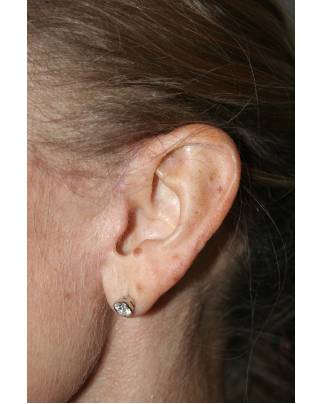
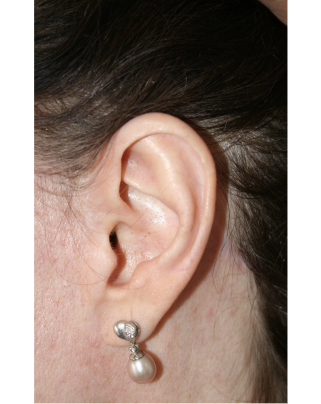
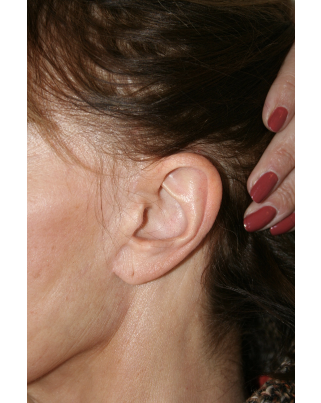

Three women and one man who have undergone face & neck lifting with Rajiv Grover. The incisions around the ear are now over 4 months old and, in each case, illustrate that the scar is well hidden and allows the hair to be worn in any style
If I have had a facelift before, can I have another one?
Approximately 40% of Mr Grover’s practice involves treating patients who have had a facelift before, and they fall into two groups. Patients may come because they are now older and have continued to age since their previous facelift, which was several years ago. This is referred to as Secondary Facelift Surgery. Some patients come because of unhappiness with scarring or residual signs of ageing which were not addressed during their primary facelift. This is referred to as Revision Facelift surgery. Mr Grover’s personal revision rate following his own facelifts is less than 1% so the overwhelming majority of patients he treats for scarring or residual signs of ageing have had their primary facelift surgery elsewhere.


Before and after photos of facelift patient operated on by Rajiv Grover
Repeating a facelift which was done over 7 years before (Secondary facelifting) is usually straightforward as there will be further laxity in the soft tissues as a result of the ageing process making another facelift technically feasible. One can have up to three facelifts before the tissues become difficult to operate. Revision facelifting is more demanding because there may not be the laxity in the underlying tissues necessary to reposition the SMAS which is essential. Mr Grover will always give you an honest opinion if he thinks surgery is possible or whether you should wait a year or two so that a better result can be achieved when there is more laxity in the face.
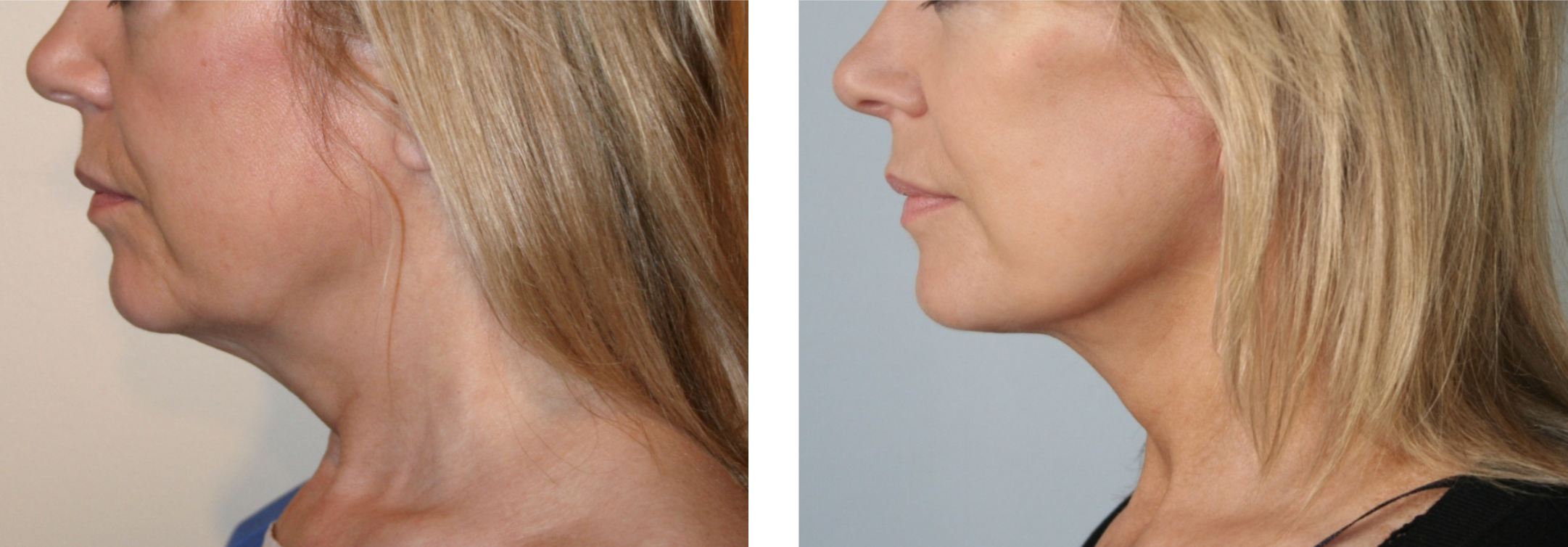
Before and after photos of facelift patient operated on by Rajiv Grover
Preparation for surgery
It is important to avoid taking any blood thinning products for 2 weeks before the operation since they have an adverse effect on bruising. These include avoiding Aspirin and non-steroidal anti-inflammatory drugs (such as Brufen, Nurofen and Voltarol) as well as ALL vitamin tablets/supplements and fish oils etc. If you wish to use arnica, please only take this following your operation and after consulting Mr Grover. Alcohol consumption can also have a negative effect on healing and bruising. Mr Grover recommends reducing alcohol consumption before surgery with abstinence for two weeks prior to your operation. If you are a smoker, it is absolutely imperative that you to stop for 8 weeks before surgery and for 4 weeks afterwards so as not to restrict the circulation to the skin. This restriction applies to all forms of nicotine including patches, inhalers, vaping, and nicotine chewing gum.
Hair colouring may be performed up to a week before surgery but should be avoided for four weeks afterwards. Please wash your hair thoroughly with a mild shampoo the day before surgery and come to the hospital without any make-up on the morning of the operation.
While preparing, please arrange for someone to drive you home after your surgery and to help you out for a few days at home if required. Planning to keep yourself occupied whilst recovering is also important so please make sure you have your subscription to Netflix and plenty to read.
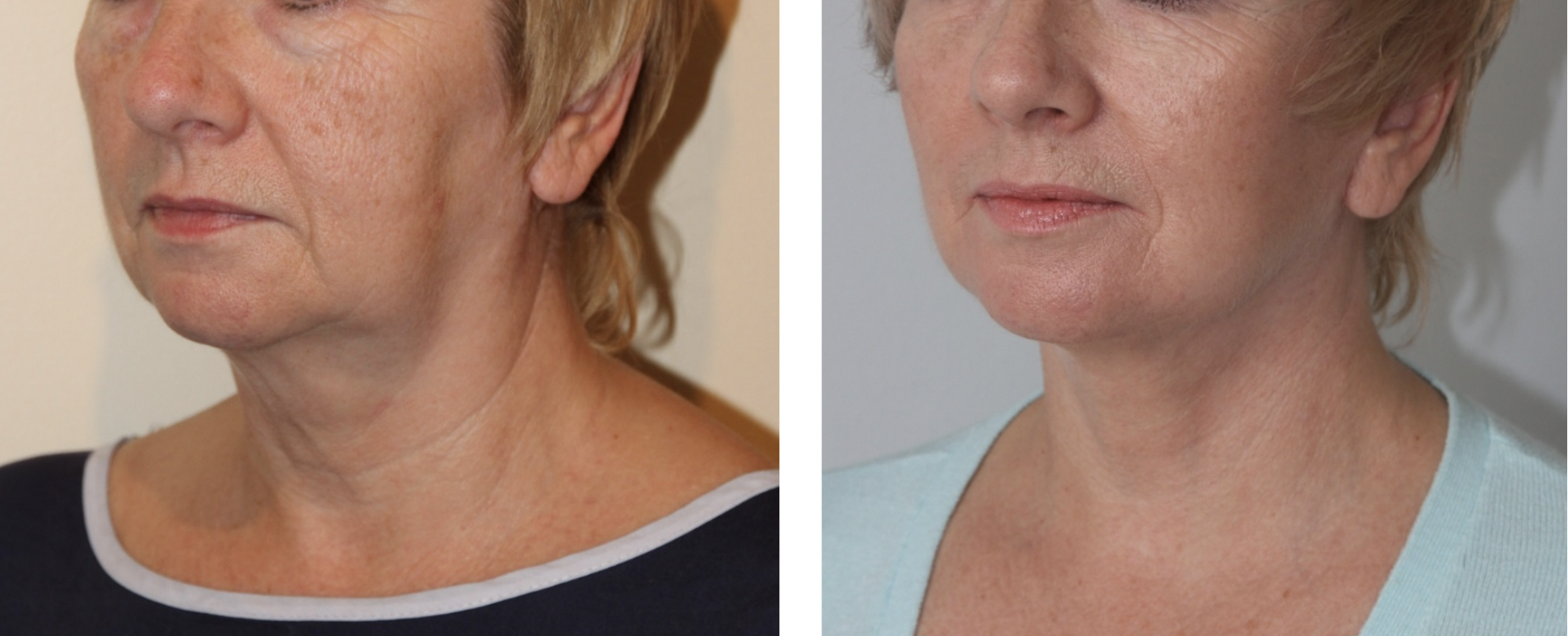
Before and after photos of patient operated on by Rajiv Grover
Where will my surgery be performed?
Surgery is performed at The London Clinic adjacent to Harley Street, where Mr Grover works as a Consultant Plastic Surgeon. It is a well established Private Hospital with extensive facilities and renowned for treating the Royal Family. It has a State of the Art centre dedicated to Plastic Surgery with a team of specialist nurses. You will be admitted on the day of surgery and will usually stay two nights for your comfort. It is helpful (but not essential) to have a friend or relative to accompany you home when you leave hospital after surgery.
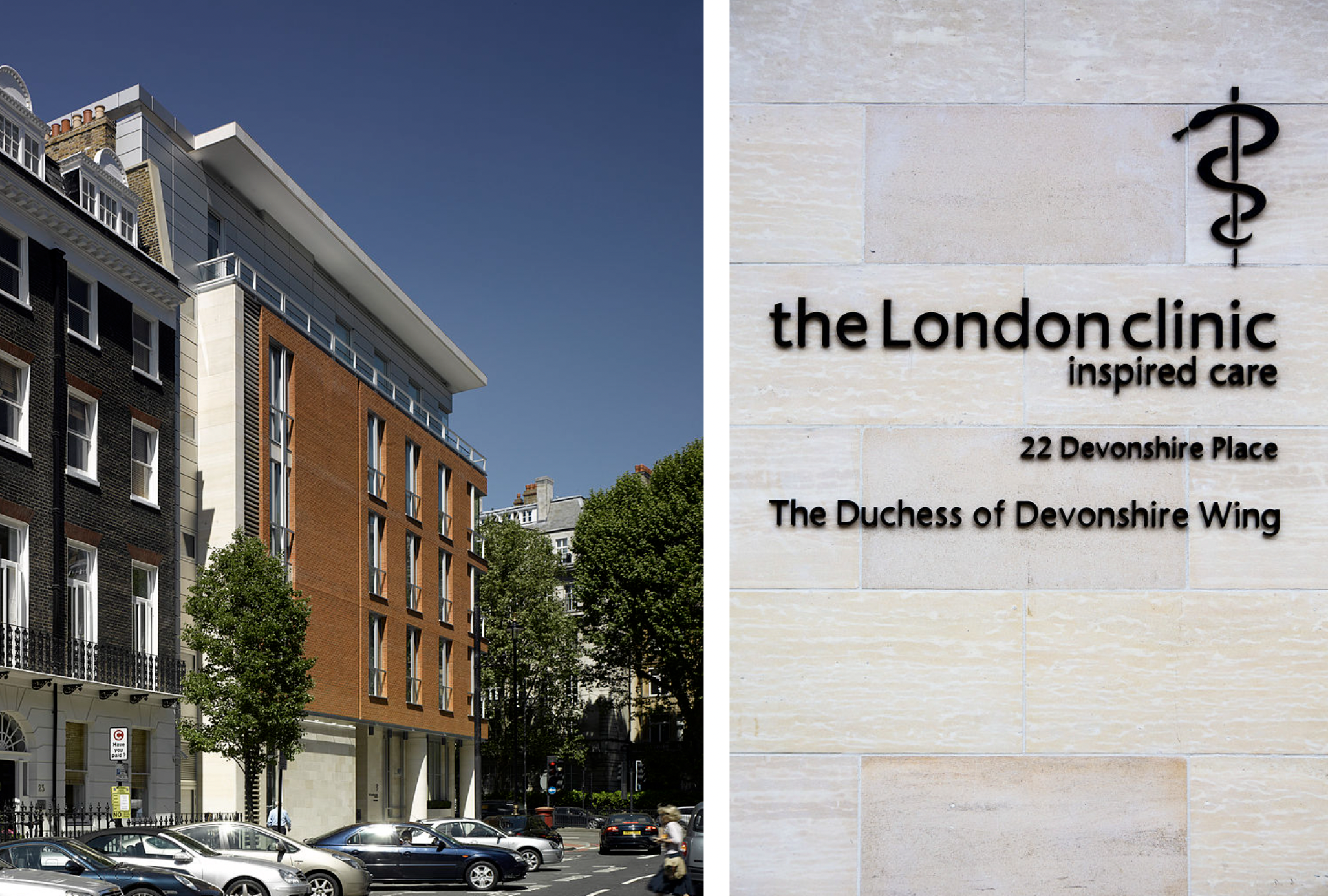
What type of anaesthetic will be used?
Facelift surgery is carried out under TIVA (Total IntraVenous Anaesthesia) which is halfway between “Local anaesthesia with sedation” and full “general anaesthetic”. it is if you like, a light form of general anaesthesia, so you sleep through the whole procedure. It combines a quick recovery with patients usually sitting up, chatting, and enjoying dinner approximately 2 hours after the operation but with the added safety of protecting your airway whilst you are asleep which local anaesthetic with sedation does not. It provides the great benefit that your blood pressure can be very carefully controlled (much more so than Local anaesthetic with sedation) and also your carbon dioxide level during surgery can be reduced. Controlling these two factors significantly reduces your bruising and swelling following surgery. Mr Grover has personally researched this aspect of facelifting and published scientific papers both in the UK and USA documenting how these effects can improve outcome.
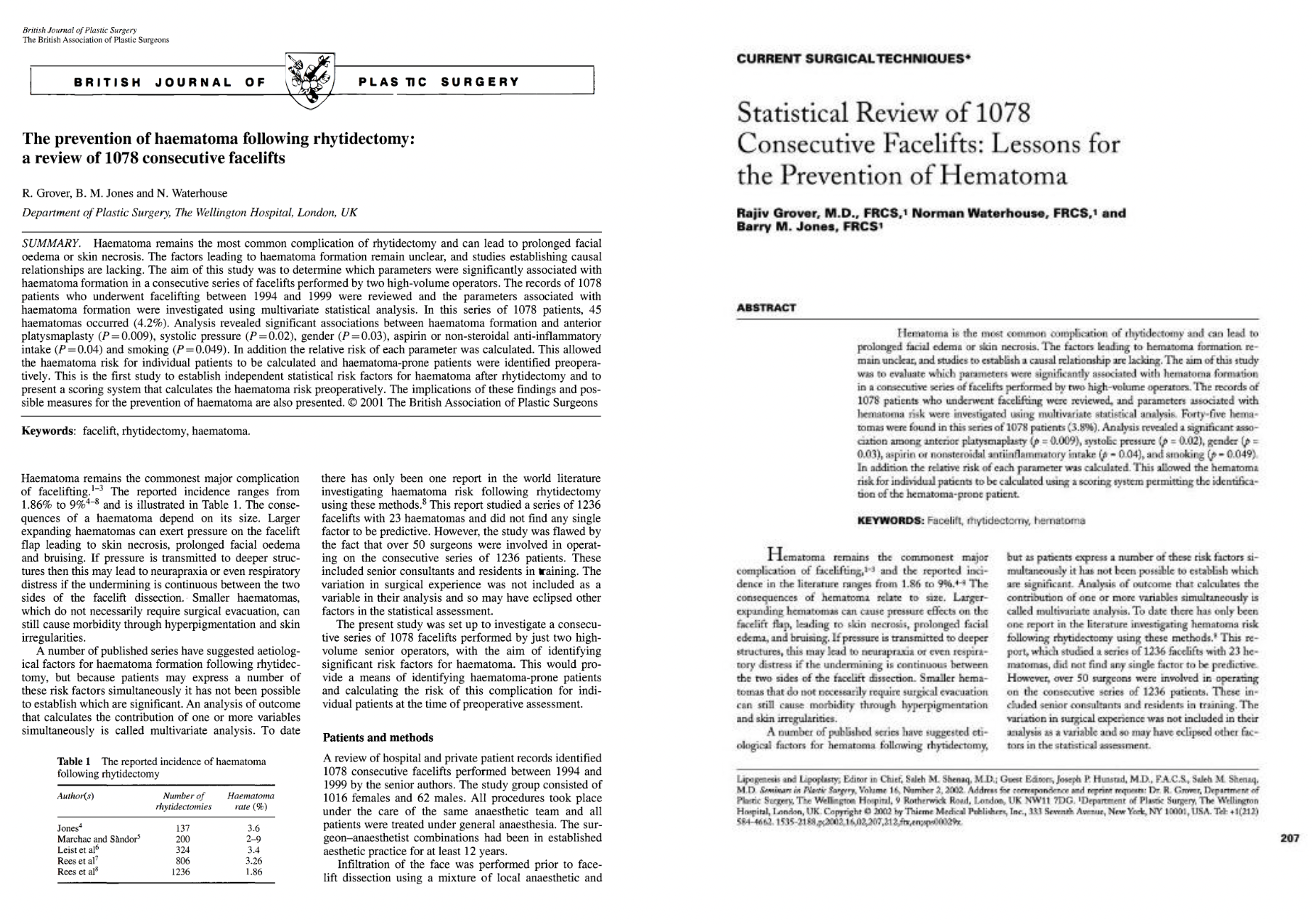
Mr Grover employs the services of a skilled Anaesthetist who specialises in anaesthesia for facial plastic surgery. He is a Consultant at University College Hospital and has been a Tutor for the Royal College of Anaesthetists. Mr Grover has worked with the same Anaesthetist, Dr Raman Verma for over 20 years. There is no doubt that focus is essential when performing facelift surgery. Mr Grover has a regular team in the operating theatre with whom he has worked with for over 15 years. This allows him to make you the centre of his full attention.
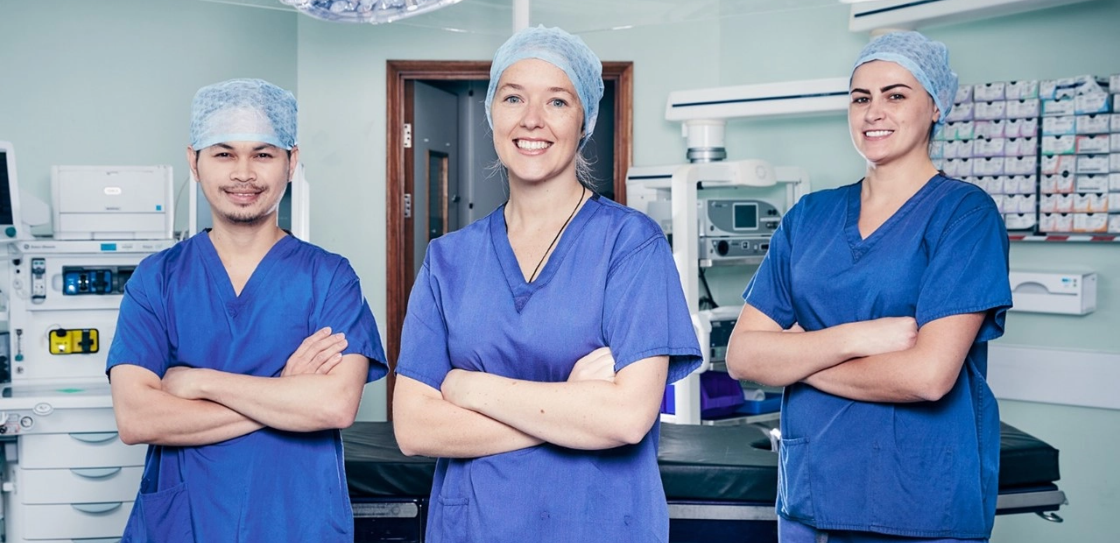
Mr Grover operates with a regular team in theatre which allows him total focus
What does the operation involve?
After the anaesthetic has been administered and you are gently asleep Mr Grover prepares your face and hair for surgery. No hair is shaved during facelifting as it is easily parted with gel and ribbon ties. Mr Grover infiltrates the face with a saline solution containing local anaesthetic (tumescent infiltration) which reduces bruising and swelling and has also been proven to improve scars following facelift surgery. The incisions are hidden around the ear with minimal extension into the scalp of around 1cm only. Mr Grover never extends his facelift incisions into the temple as these can remain visible. Sometimes an additional incision is made under the chin to allow for fat removal, deep neck contouring along with suturing of the neck muscles centrally (anterior platysmaplasty).

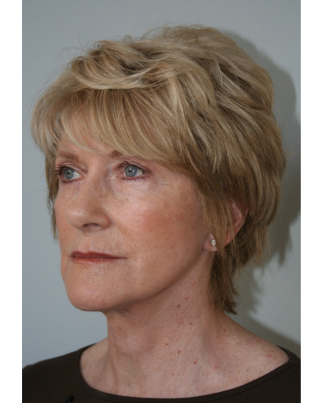
Before and after photos of facelift patient operated on by Rajiv Grover
Mr Grover uses the Deep Plane Facelift technique which means the skin is lifted for only a short distance before going under the SMAS and Platysma layers which lie below the skin. Mr Grover then lifts the SMAS / Platysma layer after releasing their underlying attachments which allows them to be repositioned freely and without tension. As the skin was not separated from the SMAS it is carried as a passenger along with it. After removing surplus skin, the remaining facial skin is stitched in place without tension.
A light bandage is then applied around the face and neck for the first night which Mr Grover removes himself the following morning. After this you will have no further dressings covering the face.
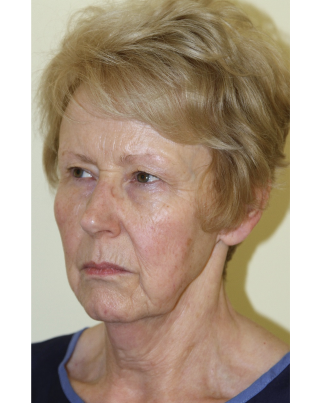
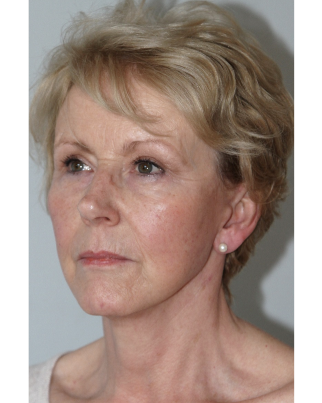
Before and after photos of facelift patient operated on by Rajiv Grover
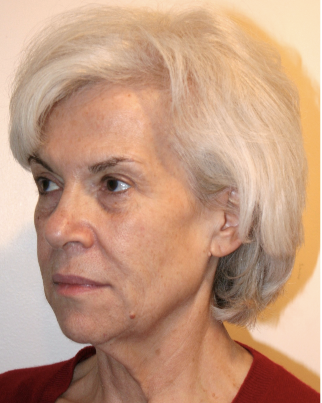
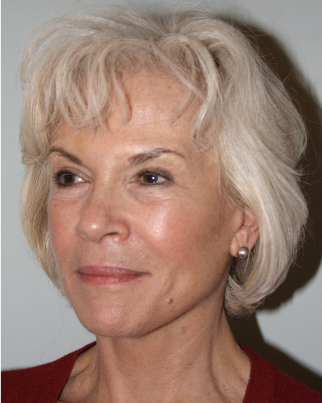
Before and after photos of facelift patient operated on by Rajiv Grover
What happens after the operation?
In Hospital (1-2 days)
A light dressing will be applied at the end of the operation which remains in place overnight. You will be nursed in a semi-sitting position immediately after the operation, which helps to reduce swelling. There is not usually much pain or discomfort although there is often a tight feeling in the neck which settles within a few days. On the day after surgery, the dressings will be removed by Mr Grover, and your hair will be washed by the nurses after which you have a quiet day resting and relaxing. To help reduce swelling you will be encouraged to put cool pads soaked in iced water on the face. The nurses will assist you with this. You will leave after two nights, and Mr Grover visits each day to check on you and ensure you know exactly what to do whilst recovering at home to get the best outcome. You will not need to wear any bandages or garments when you leave hospital.
At home (2-14 days)
It is essential to rest for the first 10-12 days, pottering around the house and watching Netflix but not really going outdoors. Swelling will tend to increase during the first 3-4 days after surgery (this is normal) and then subside over the next 2-3 weeks. It is helpful to rest/sleep with three or four pillows after surgery in order to help swelling subside more quickly. It is helpful to keep the face cool using iced water soaked hand towels as you did in hospital. Make sure you are well hydrated but don’t force yourself to drink excessively. This is not the time to be drinking two plus litres of water each day in the hope of ‘Detoxing’ the system. The brain releases a hormone after surgery which tends to retain water (Antidiuretic hormone – ADH), so if you drink more fluid than you need, it will be retained, causing more swelling.
It is important to avoid bending forwards because this will aggravate facial swelling as will carrying anything heavy. Please limit what you pick up to 5kg (equivalent to a full kettle in each hand). It is better to avoid washing hair in the first week however this will be done by the nurses before leaving hospital and can then be repeated after 6-7 days (instructions will be provided). You should also avoid very chewy foods and avoid talking a lot as both these activities exercise the face, which can aggravate swelling.
After a week Mr Grover will arrange to see you in Harley Street for a check and possibly to remove any stitches near the eye if blepharoplasty was performed. He will see you again at between 10-14 days to remove the remaining facelift stitches. Facial and eyelid stitches run beneath the skin and are not visible except at either end. They will therefore not leave stitch marks so do not worry.
From 2-6 weeks after surgery
The cheeks and ears will feel numb which is normal. Soft feelings of sensation return by 2-3 months, but it may take 12-18 months for normal sensation to return. In general, it is best to continue with your usual facial skin care regime as the risk of sensitivity to a new product is best prevented. Please avoid putting any skin products near your scars and also avoid hair colouring till 4 weeks after surgery. Skin creams in contact with your scars before 4 weeks can cause an infection.
Please avoid driving for the first two weeks after surgery or until such time as your neck movements are comfortable. Most patients can return to work after 2-3 weeks although you may wish to avoid social events till after 3 weeks when much of the fine swelling has settled. You may resume gentle sporting activity at 4 weeks building up to full cardio exercise by 6 weeks. Performing heavy exercise prior to that can cause prolonged swelling.
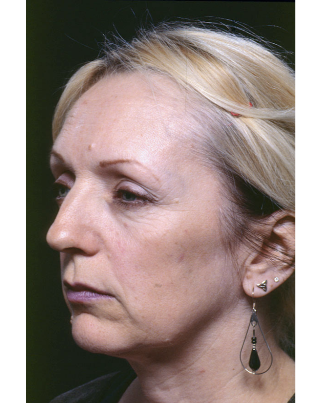
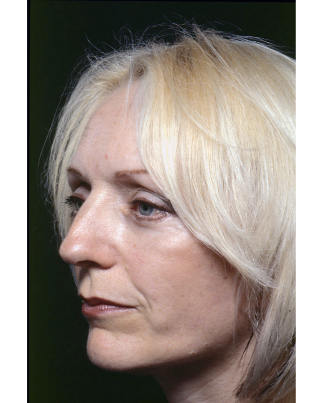
Before and after photos of facelift patient operated on by Rajiv Grover
Summary
| Proceduce time | 3 -4 hours |
| General / Local anaesthetic | Light General Anaesthetic / TIVA |
| No. nights in hospital | 2 nights |
| Time off work | 14 days |
| Socialising | 2 -3 weeks |
| Back to normally / begin sports | 4 weeks |
| Back to Cardio exercise | 6 weeks |
Summary
The Deep Plane Facelift is a more intuitive technique which better addresses the ageing process. It allows the SMAS to be repositioned without tension and carries the skin with it rather than needing the skin to be lifted and pulled separately. This preserves a natural, softer look. Using the Roadmap of your younger photographs means the surgery can be personalised to each patient (Facelift Couture) thereby keeping you still looking like you.
